Introduction: What is Net Zero Emissions?
The world is shifting towards more sustainable business models, and net zero emissions is a core goal for many industries globally. But what does it mean? Achieving net zero emissions requires companies to reduce their greenhouse gas (GHG) emissions to as close to zero as possible, with any remaining emissions being offset through methods like carbon capture or reforestation.
In Malaysia, businesses are increasingly aligning with ESG (Environmental, Social, and Governance) goals, driven by government policies and global trends. One of the often-overlooked contributors to a company’s carbon footprint is waste management. Waste not only impacts landfills but contributes significantly to GHG emissions, especially through improper disposal methods like incineration and landfill dumping.
How Waste Management Contributes to Net Zero
To achieve net zero, businesses need to rethink their approach to waste. Waste that is improperly managed or ends up in landfills emits large amounts of methane, a potent greenhouse gas. Reducing waste, increasing recycling efforts, and finding ways to divert waste from landfills are essential strategies for reducing a business’s carbon footprint.
Sustainable waste management is more than just recycling; it’s about leveraging data to track waste streams, optimize collection routes, and implement waste-to-energy solutions. At GarGeon, we provide businesses with the tools to not only reduce waste but also minimize emissions, moving them closer to achieving net zero targets.
In Malaysia, businesses are increasingly aligning with ESG (Environmental, Social, and Governance) goals, driven by government policies and global trends. One of the often-overlooked contributors to a company’s carbon footprint is waste management. Waste not only impacts landfills but contributes significantly to GHG emissions, especially through improper disposal methods like incineration and landfill dumping.
The Role of GarGeon in Achieving Net Zero Emissions
GarGeon’s approach to waste management helps businesses reduce emissions in several key areas:
- Waste Diversion: By optimizing waste collection and prioritizing recycling, GarGeon helps businesses divert waste from landfills, which is a significant source of methane emissions.
- Data-Driven Decision Making: Our platform provides real-time data on waste generation, allowing businesses to track their carbon footprint and make informed decisions to reduce waste and emissions.
- Recycling Program: We partner with recycling facilities or partners who able to convert waste into valuables materials like fertilizer or animal food, offering businesses a sustainable alternative to traditional disposal methods.
With these strategies, GarGeon enables businesses to take meaningful steps toward achieving net zero emissions.
Sustainable waste management is more than just recycling; it’s about leveraging data to track waste streams, optimize collection routes, and implement recycling solutions. At GarGeon, we provide businesses with the tools to not only reduce waste but also minimize emissions, moving them closer to achieving net zero targets.
In Malaysia, businesses are increasingly aligning with ESG (Environmental, Social, and Governance) goals, driven by government policies and global trends. One of the often-overlooked contributors to a company’s carbon footprint is waste management. Waste not only impacts landfills but contributes significantly to GHG emissions, especially through improper disposal methods like incineration and landfill dumping.
Case Studies: How Companies Have Achieved Net Zero with GarGeon
Many of our clients have already made significant progress toward their net zero goals with the help of GarGeon. To learn how GarGeon help business to achieved net zero by check out the case studies.
Steps for Businesses to Start Their Net Zero Journey
Achieving net zero emissions is a complex journey, but there are tangible steps businesses can take today:
- Conduct a Waste Audit: Start by identifying where waste is being generated and how it’s currently managed. GarGeon’s platform can help you analyze these streams and identify areas for improvement.
- Set Carbon Reduction Targets: Establish clear goals for reducing emissions. These should be tied to measurable metrics, such as reducing waste by X% or diverting Y tons from landfills.
- Optimize Waste Collection: Use technology to streamline waste collection processes, reducing unnecessary trips, and optimizing routes to cut down on transportation emissions.
- Explore Recycling Program: Partner with providers like GarGeon to turn waste into valuables, reducing landfill reliance and contributing to your net zero targets.
- Track and Report Progress: Ongoing monitoring is essential for achieving net zero. Our data analytics tools allow businesses to track their waste management progress and report it in their ESG disclosures.
Conclusion: The Future of Net Zero Emissions and Sustainable Business
Achieving net zero emissions is no longer just a future goal; it’s a current necessity for businesses looking to remain competitive and align with global sustainability trends. By partnering with GarGeon, businesses can optimize their waste management, reduce their carbon footprint, and make measurable progress towards their net zero goals. With the right strategy and tools, sustainable business practices become more than a goal—they become reality.
GarGeon is committed to driving the green transition. If your business is ready to start its net zero journey, let’s talk about how we can support you in reaching your sustainability and ESG objectives.

